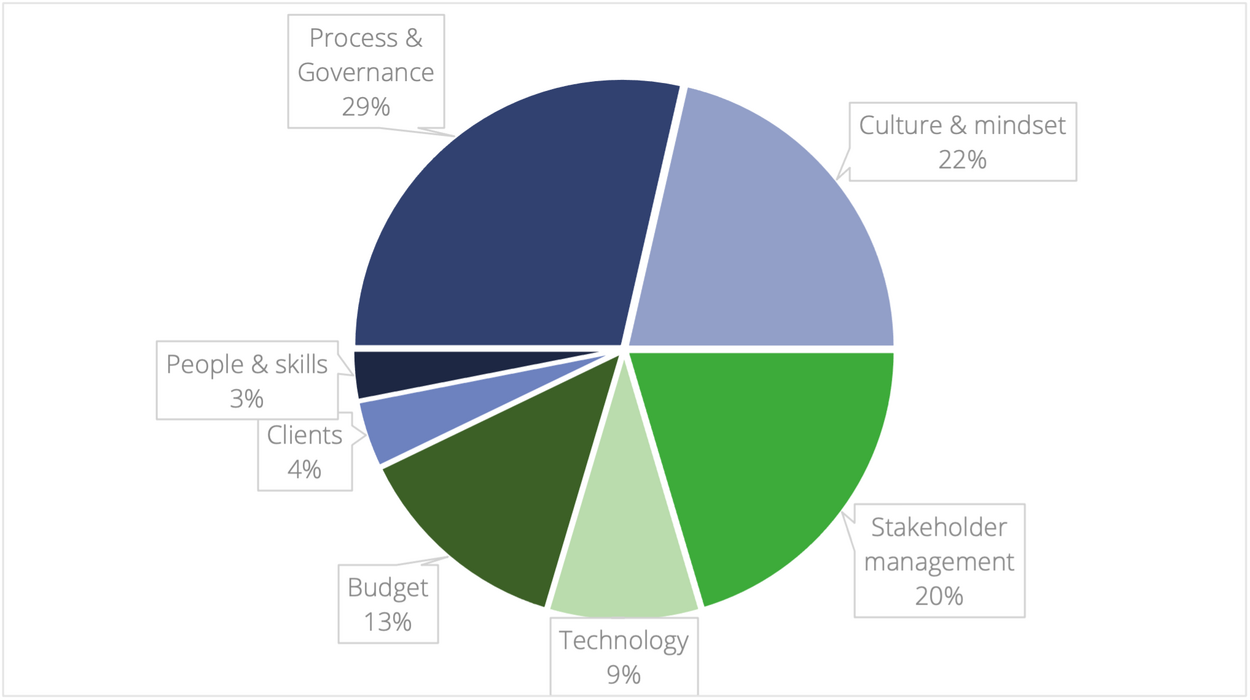Keeping the innovation engine running at all times is key for your business survival in the long run. That might be challenging nowadays, since we’ve all been focused on keeping our business up and running in the short term. We’ve asked companies about their main challenges and we’ll give you an overview about how to tackle them.
The struggles we face and what we can do about them
We at TomorrowLab first-handedly noticed that many companies struggle with keeping that innovation spirit alive. When we ask business owners about their biggest innovation hurdles during this crisis, almost all of them point towards internal organizational difficulties.

1. Process & governance
One out of three companies indicates that the process & governance of innovation projects has become more difficult. It’s harder to gather new ideas and follow them up and to keep the same efficiency in your process as before. Because of the shift from working on-site to fully remote, the processes that seemed to work well on-site don’t work well anymore in a remote setting. Imagine the idea generation workshops you’re having on-site. Nowadays, many companies are looking for new tools to ideate remotely together, like Mural or Miro.
It all starts with getting a grip on the innovation process and understanding what’s needed to turn your newly generated ideas into successful projects.
2. Culture & mindset
One out of five companies indicates that fostering an innovation mindset is harder in these times, especially since large groups of people are working from home. Companies struggle to maintain their brand and culture in a remote setting. There is no fixed office place anymore where people come together and get the "authentic feel" of what it’s like working at the company.
An important insight is to understand how your employees connect with each other, how they communicate and who they reach out to when trying to get things done. Koen and Sebastian have already discussed that topic in a blog post. Let me give you one tip already: ONA.
3. Stakeholder management
Communication is key. Together with fostering that innovation culture and mindset, this is one of the biggest challenges during a crisis. How do you keep your stakeholders involved? How can you influence them remotely? How can you get a better understanding of their needs through a screen?
The way we communicate has changed too. Priorities shift, stakes change disruptively and social relations are put to the test.
One cannot accidentally bump into an impactful colleague at the coffee machine anymore to discuss the importance of your project. You have to book a meeting.
It’s important to re-evaluate the behavior of all people involved in your projects. The innovation roles you need in an on-site setting might differ from the roles you need in a remote setting. To know which roles you need to drive innovation, you can read this interesting blog post.
Of course, there are many more aspects to being able to deliver innovation projects. If you want to learn more about whether your organization is well-prepared, discover more about our innovation maturity scan offering. Our Innovation Maturity Scan & Excellence program helps you to avoid pitfalls by identifying the weaknesses in your company’s innovation capabilities and defining the right steps to build a resilient innovation engine.

